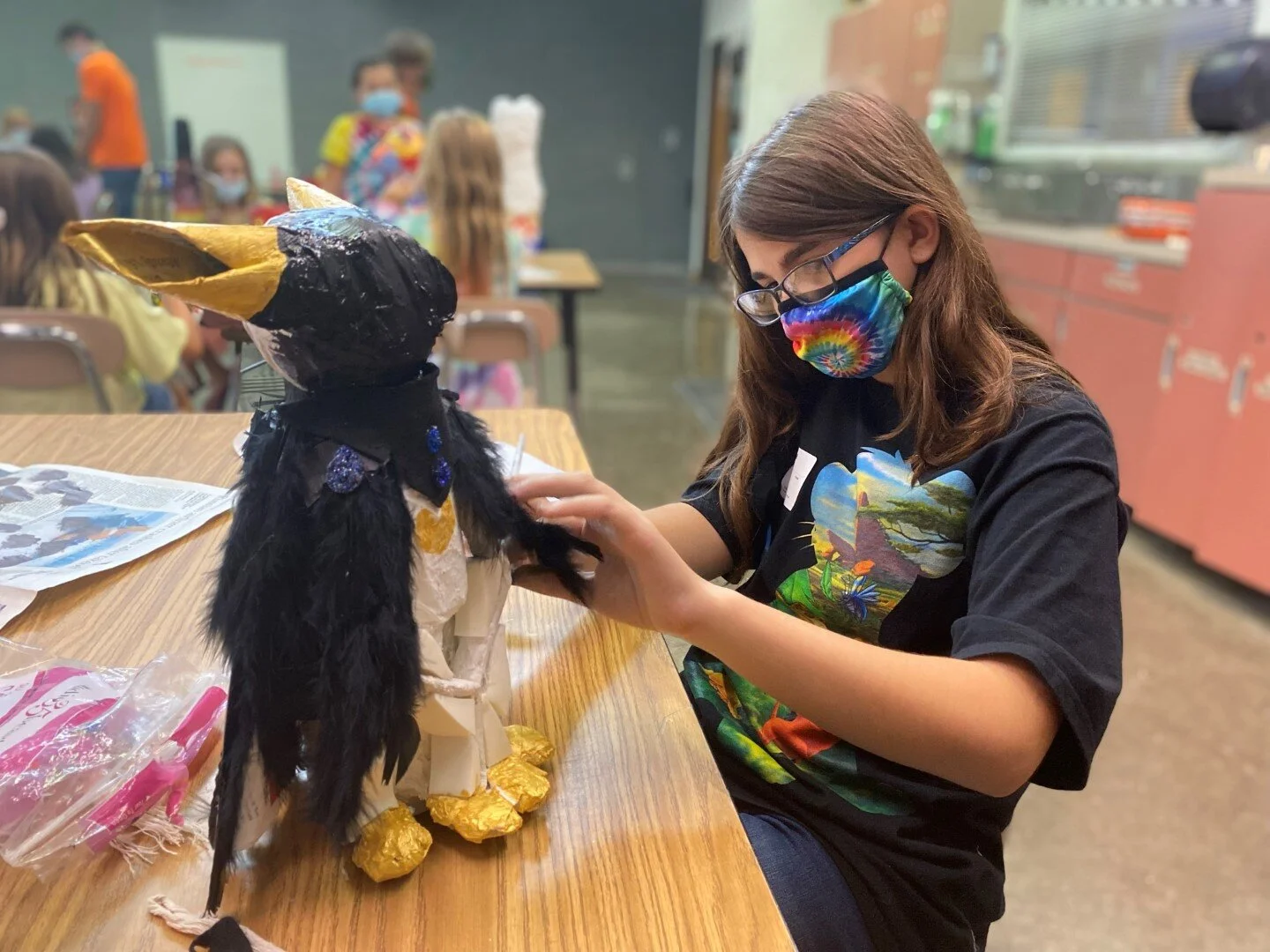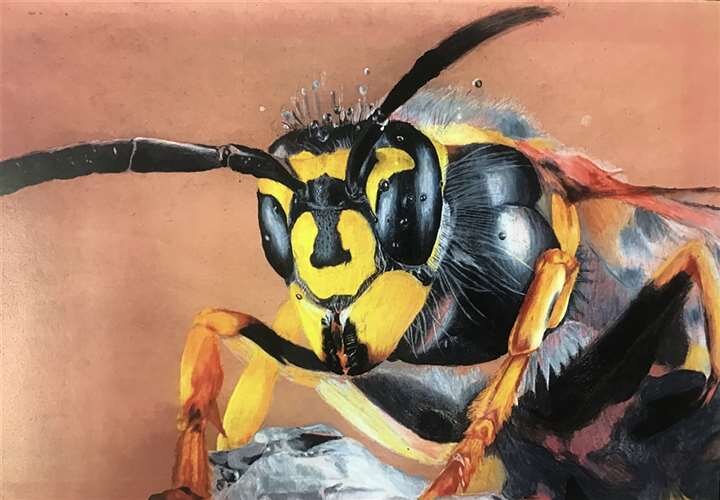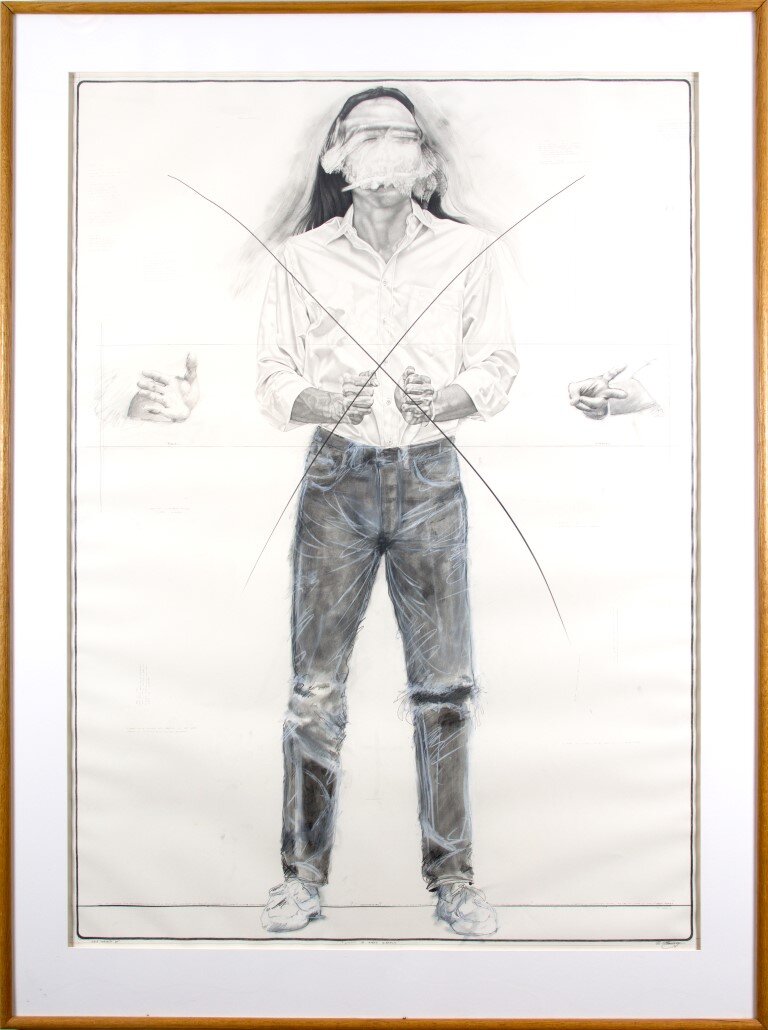


Finding Meaning Within: The Photography of John Pinderhughes
A star of the New York art world, John Pinderhughes (b. 1946) has established himself over the past half-century as the ultimate observer and narrator of the communities all around him. This Fall, the Polk Museum of Art at Florida Southern College presents an original, extraordinary retrospective exhibition, years in the making, showcasing Pinderhughes’ broad reportorial eye and his ability to find meaning and value in everything — and every person — he photographs. Through Pinderhughes’ powerful camera lens, he makes clear that every human subject and every still life object has a story worth telling.
Thank you to our Exhibition Sponsor:
Exhibition Supported by:
Mischelle Anderson
Yvonne M. McShay
Anonymous gift in honor of Clara Beatrice Pinkston

When We Were Young: Children and Animals in Art from the Golisano Children's Museum of Naples
Philip Morsberger, Ode to Flossie, 2011, Oil on canvas, Gift of the artist, Courtesy of the Harmon-Meek Gallery.
Featuring more than 50 works in various media on the theme of children and animals in American figurative art, this original exhibition promises to delight the child in all of us. When We Were Young focuses on two of the most timeless and limitlessly explorable motifs in art — children and animals — both popular subjects of art history for as long as art has been produced. The exhibition features nearly the entire art collection of the Golisano Children’s Museum of Naples (CMON) and takes the importance of visual literacy as its jumping-off point to engage learners of all ages.
Thank you to our Exhibition Sponsors:

Pictures at an Exhibition
ROBERT RAUSCHENBERG, ‘TIBETAN GARDEN SONG,’ 1986, POLK MUSEUM OF ART COLLECTION.
Pictures at an Exhibition is a unique collaboration between the Polk Museum of Art and the Lakeland Symphony Orchestra. This one-of-a-kind exhibition promises to delight art and music lovers alike. Guest curated by instrumentalists of the Orchestra, Pictures at an Exhibition pairs artwork from the Museum’s permanent collection with hand-picked musical selections performed by the musicians themselves for a unique multi-sensory viewing and listening experience.
Pictures at an Exhibition is inspired by Russian composer Modest Mussorgsky’s beloved 1874 ten-piece suite of the same name. Mussorgsky created his own Pictures at an Exhibition in honor of his beloved friend, artist and architect Viktor Hartmann. When Hartmann died suddenly in 1873 at only 39 years old, the Imperial Academy of Arts in St. Petersburg staged a memorial exhibition featuring more than 400 works by Hartmann, including two paintings Mussorgsky held in his private collection. Mussorgsky, still heartbroken over the loss of his dear friend, visited the exhibition and was so moved that over the course of the next three weeks he dropped the projects he had been focused upon and composed — from start to finish — the complete Pictures at an Exhibition. The suite of ten pieces represents in music Mussorgsky’s tour of the memorial exhibition, with each piece a musical interpretation of the experience of looking at ten of Hartmann’s drawings and paintings on display in the show.
Our Pictures at an Exhibition carries Mussorgsky’s concept fully into the 21st century. Each work in this exhibition provides an exciting visual and musical pairing, encouraging visitors to experience how both the performing and visual arts can enhance and engage with one another.

Summer Art Camp 2021
Artwork by Polk Museum of Art Summer Camp Students, Ages 7 through 13

Hindsight 2020: A Year Later
In this new installment of Hindsight 2020, we selected nine artworks from our online exhibition to revisit and to present for the first time in our galleries as an opportunity to reflect further upon how our lives have changed in the past year.

American Impressionism: Treasures from the Daywood Collection
This Summer and Fall, the Polk Museum of Art at Florida Southern College presents audiences with an incomparable peek not merely into the incredible story of Impressionism’s rise in the United States but also into the influential world of private collecting.

Y2K: Art at the Turn of the 21st Century from the Permanent Collection
Kenny Scharf, Galaxiverse, 1998, Polk Museum of Art Permanent Collection.
As the 1990s drew to a close, people around the world began to imagine — and grow concerned about — what the onset of a new millennium might hold in store. The turn of any century is often heralded as a marker of historical change, albeit an artificial, calendar-dictated moment of leaving behind the past and looking forward to modern transformations.
In the late 1990s, the pending turn of a new millennium, the first since the year 1001, thus proved even more anticipated than ever in popular culture; the concept of the 21st century as a whole had always seemed so far-off, practically space-aged. Although the new millennium (and the new century) would not begin officially until 2001, the idea of living in the year 2000 — with its replacement of the 19- prefix with 20- — felt surreal at the time to those who had only ever known the 1900s. And all over the world Y2K became shorthand for this period of strange apprehension.
The Y2K era gets its name from the apocalyptic Y2K computer bug that was feared on New Year’s Eve 1999, but which never resulted in the mass panic or technological breakdown that caused many either to dread or to party like it was 1999 (i.e., the end of the world). The name, however, has stuck. Y2K has become a term used synonymously with the period of transition between 1999 and 2000 and, as an era, shorthand for the years immediately prior to and following the year 2000.
This installation of works from the Museum’s permanent collection features a selection of objects in a variety of media and from a multitude of perspectives from the Y2K era. The works on display span the consequential period of 1998 to 2001, and, while most artists do not comment explicitly on the millennial change, their art is inseparable from the time in which they lived. Striving to produce meaningful art, artists, like everyone else in the late 1990s and early 2000s, grappled with a world on the cusp of great change and new realities, be they psychological, emotional, social, technological, or otherwise.
So might you detect in that hint of nostalgia a late 20th century longing for simplicity that may slip away in the years ahead? Might you sense in that seated figure, absorbed in her laptop, a touch of artistic humor about the Y2K bug or perhaps a prophesy of the screen-mediated world we live in today? Now, 20 years into the 21st century, it seems more fitting than ever to look back at a generation of art made in a time of epochal change.


Josephine Sacabo: Those Who Dance
La Musa Piensa en el Amor, 2020, #1/12, photogravure.
Josephine Sacabo’s art is both of our time and embedded deeply in a time past. She is an acclaimed, New Orleans-based contemporary photographer whose body of work seems infused with a powerful nostalgia for the non-digital photographic forms and techniques of photography’s nascent years as an artistic medium in the previous two centuries. As visitors to Those Who Dance, an original exhibition of Sacabo’s most recent series, will quickly realize, Sacabo (b. 1944) is one of the most poetic photographers actively working in the United States today and one whose ethereal and moving photographs look nothing like those of any other artist.
Through the four recent series that form the core of the exhibition (Those Who Dance, Disquiet, Cuentos, and Le Diable au Corps), Sacabo conjures a world of mystery and mysticism in her work, excavating stories about lives lived in secret struggle or without inhibition, reviving traditional processes of photography like photogravure and tintypes, and giving much-needed voice to women of the past whose legacies still inspire and haunt the artist to this day.


Kids Tag Art
Kids Tag Art inspires young artists to create their own unique design, learning the practical application of license plate art to support worthy causes, fashioned after Florida's 100+ specialty license plates.

Steven Chayt: Some Call it Art
The Polk Museum of Art is pleased to present Some Call it Art, a solo exhibition by artist Steven Chayt.

Annual Scholastic Art and Writing Awards
The Polk Museum of Art is excited to announce that it will be hosting the nationally-renowned 98th Annual Scholastic Art and Writing Awards for the Polk County, Florida Art Region.

Harrison School for the Arts Senior Exhibition
Harrison School for the Arts Senior Showcase

Toulouse-Lautrec & the Belle Époque
Henri de Toulouse-Lautrec, La Troupe de Mademoiselle Eglantine, 1896, Color lithograph, © Herakleidon Museum, Athens Greece
Henri de Toulouse-Lautrec (1864-1901) is one of the most familiar names of the Post-Impressionist era, and his depictions of life in fin-de-siècle Paris remain among the most popular and recognizable today. Indeed, Toulouse-Lautrec's own biographical renown may be outshone only by the renown of his most reproduced imagery, namely his posters representing the world of bohemian Parisian nightlife in the final decade of the 19th century, the so-called Belle Époque. If you think of the Moulin Rouge or the dance hall as the places to be in 1890s Paris, it is because Toulouse-Lautrec's famed drawings and lithographic posters make us certain of it.
A master painter, printer, and illustrator — a true exemplar of the craft of draftsmanship — Toulouse-Lautrec saw no line between fine and commercial art. From his paintings and drawings to the advertisements he was commissioned to produce to entice customers to his own favorite nightspots, in his pictures of the Belle Époque Toulouse-Lautrec created the timeless scenes of France's cabarets, concert halls, and theaters we still cherish today. This February, Toulouse-Lautrec promises to lure local audiences into his world, albeit much closer to home, as he takes over the Polk Museum in the form of an international exhibition that includes more than 230 works of art and artifacts from the artist's startlingly brief but transformative decade-long career.


Pierre and Cathy Dutertre: Quest
Quest is an ongoing series of ethereal self-portraits that probe the fragmented and shadowy space of dreams, memory and personal history in search of an elusive sense of self, purpose and place in this world.


Observations: Street Photography from the Permanent Collection
Selected from the Museum’s permanent collection, Observations brings together an unusual collection of photographs that map the social landscape of the street. With each artist's careful cropping, decisive shots, and individual style, the photographs in this exhibition show that the everyday thrum of the streets is anything but banal; instead, these images exemplify how vibrant the city world can be, tracing the human lives and behaviors that make up the daily urban scene. In Observations, we gain the opportunity to take a step back in time and see the lives of those passersby we might otherwise overlook, now through a new photographic lens.
Dianora Niccolini, Punks of the 60’s, 1960-1961, Gelatin silver print, Gift of Dianora Niccolini & William Knight Zewadski.

What’s the Story?: Art in Search of a Narrative
Have you ever wondered about what is going on in a painting? What that daydreaming figure is thinking about? What story the artist is trying to tell? In this original Polk Museum of art exhibition, visitors will be invited to use their own imaginations to look beyond the canvas, asked to envision the unwritten – and unpainted – stories in works of art with open-ended narratives. Featuring more than forty works from the Museum’s permanent collection, this show places each viewer into the essential role of narrator, providing creative answers to the questions the art itself poses but can never reveal.
William Entrekin, The Apprentice, 2008, Florida Southern College Permanent Collection, Gift of the Artist, made possible by Harmon-Meek Gallery.
What story do you see? Click the button to share your story about you favorite work from the exhibition.

Juxtapositions
Ummarid 'Tony' Eitharong, Attempt to Speak Clearly, 1987, Charcoal on paper, Polk Museum of Art Permanent Collection 1987.7.
Sometimes the greatest connections can be made by unexpected juxtapositions. In this installation of works selected from the permanent collection, we seek resonances between works of art of different styles and from across time and media. By inviting visitors to look closely and to think actively about why chosen pieces may have been placed side by side, Juxtapositions proposes no right or wrong answers, initiating instead an open-ended inquiry into the visual and thematic links that connect us and the objects all around us.










